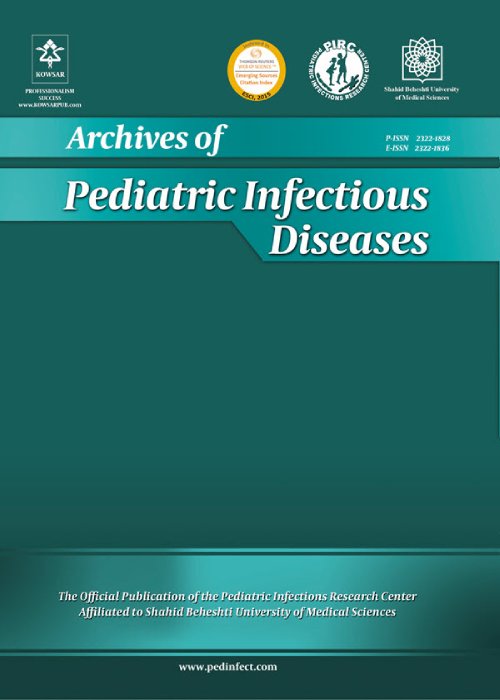Antibiotic Prescribing Pattern in Neonates of Seventeen Iranian Hospitals
Author(s):
Abstract:
Background
The association between the use of antibiotics and bacterial resistance has obviously been established and it seems to be a significant problem for public health. It is clear that irrational use and high rates of antibiotic prescription are associated with increased bacterial resistance. As antibiotics are the class of drugs commonly prescribed in neonatal and Neonatal Intensive Care Unit (NICU) wards, neonates are at high risk of opportunistic or nosocomial infections due to prolonged hospitalization and immunosuppressed condition.Objectives
It is essential for antibiotic prescription patterns to be evaluated periodically for rational use. Therefore, the present study was carried out to identify the prescribing patterns of antibiotics in neonatal and NICU wards of 17 different Iranian hospitals.Methods
The study was done during 1 calendar week between January and February 2014. All in-patients admitted to the NICU and neonatal units of 17 Hospitals in 15 Iranian cities were included. Relevant data of all neonates receiving an antibiotic at 8 am on the day of the study was collected by trained members of the study team; age of the patients, type and number of administered antibiotics, route of administration, underlying disease, and indication for use were documented.Results
The total number of neonatal in-patients was 366 on the day of the study. Mean age of infants was 9.2 ± 3.9 days, with 54.4% being male. Overall, 264 patients (72.1%) were being given one or more antimicrobials; the proportion of patients receiving antibiotics ranged from 21.4% to 100% in different neonatal units. Most frequent antibiotics used were ampicillin (25.6%), vancomycin (16.4%), amikacin (10.6%), and cefotaxime (9.74%). Parenteral route was used in 255 cases, (96.6%); 110 (41.7%) antibiotic courses were prescribed for community-acquired infections, 29 (11 %) for hospital-acquired infections, 42 (15.9 %) for pre- or post-operative prophylaxis, and 83 (31.4 %) for medical prophylaxis. Empirical antibiotics were administered to 255 newborns (96.6 %); 96.2% of patients received combination therapy.Conclusions
High use of empirical and prophylactic antibiotics, overuse of vancomycin and third generation cephalosporins are of concern and contrary to recommended therapies. Therefore, guidelines for the use of antibiotics in neonates are required and a larger number of studies are needed.Keywords:
Language:
English
Published:
Archives of Pediatric Infectious Diseases, Volume:5 Issue: 4, Oct 2017
Page:
11
magiran.com/p1755785
دانلود و مطالعه متن این مقاله با یکی از روشهای زیر امکان پذیر است:
اشتراک شخصی
با عضویت و پرداخت آنلاین حق اشتراک یکساله به مبلغ 1,390,000ريال میتوانید 70 عنوان مطلب دانلود کنید!
اشتراک سازمانی
به کتابخانه دانشگاه یا محل کار خود پیشنهاد کنید تا اشتراک سازمانی این پایگاه را برای دسترسی نامحدود همه کاربران به متن مطالب تهیه نمایند!
توجه!
- حق عضویت دریافتی صرف حمایت از نشریات عضو و نگهداری، تکمیل و توسعه مگیران میشود.
- پرداخت حق اشتراک و دانلود مقالات اجازه بازنشر آن در سایر رسانههای چاپی و دیجیتال را به کاربر نمیدهد.
In order to view content subscription is required
Personal subscription
Subscribe magiran.com for 70 € euros via PayPal and download 70 articles during a year.
Organization subscription
Please contact us to subscribe your university or library for unlimited access!


